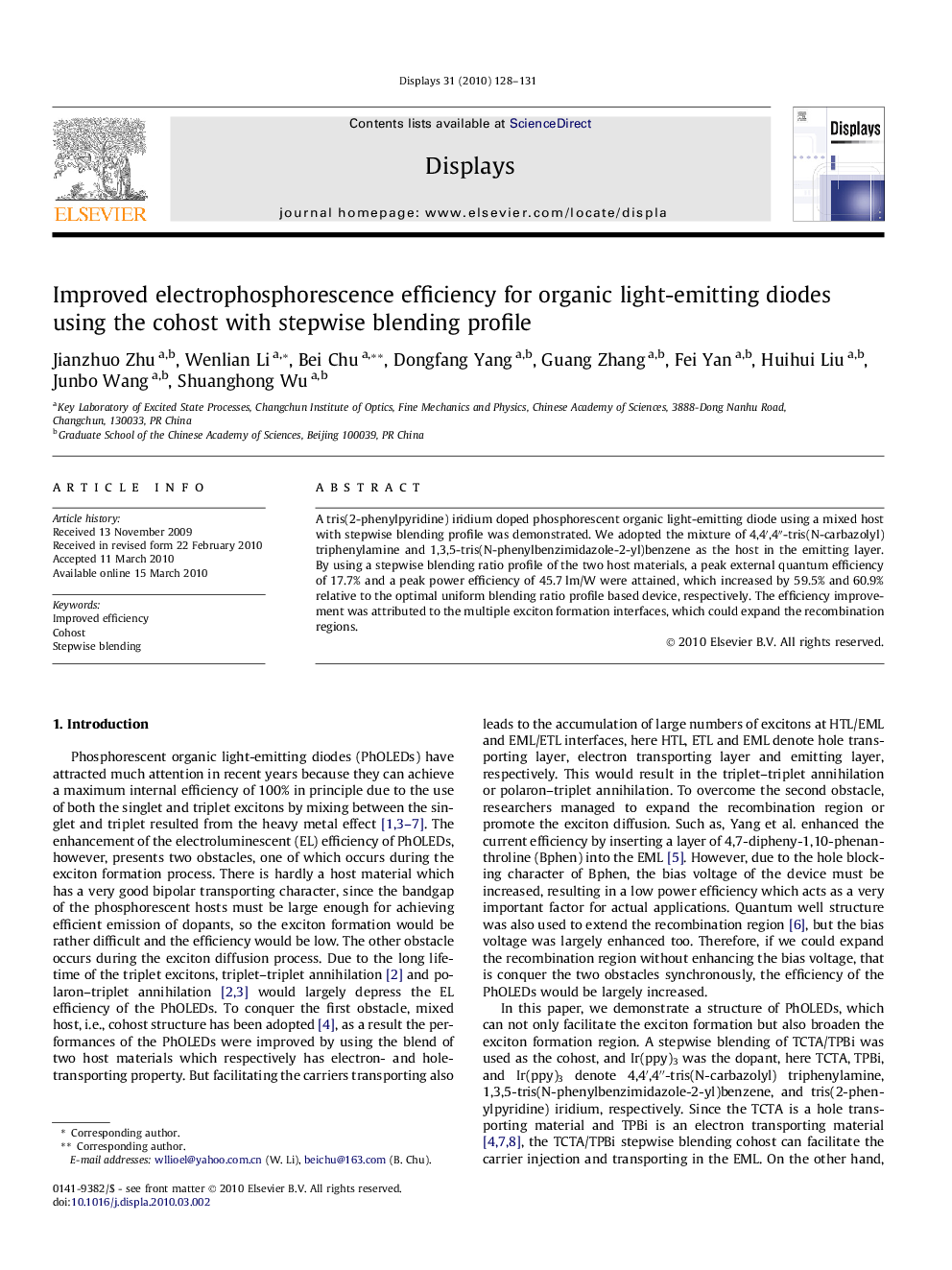| Article ID | Journal | Published Year | Pages | File Type |
|---|---|---|---|---|
| 538876 | Displays | 2010 | 4 Pages |
Abstract
A tris(2-phenylpyridine) iridium doped phosphorescent organic light-emitting diode using a mixed host with stepwise blending profile was demonstrated. We adopted the mixture of 4,4′,4″-tris(N-carbazolyl) triphenylamine and 1,3,5-tris(N-phenylbenzimidazole-2-yl)benzene as the host in the emitting layer. By using a stepwise blending ratio profile of the two host materials, a peak external quantum efficiency of 17.7% and a peak power efficiency of 45.7 lm/W were attained, which increased by 59.5% and 60.9% relative to the optimal uniform blending ratio profile based device, respectively. The efficiency improvement was attributed to the multiple exciton formation interfaces, which could expand the recombination regions.
Keywords
Related Topics
Physical Sciences and Engineering
Computer Science
Hardware and Architecture
Authors
Jianzhuo Zhu, Wenlian Li, Bei Chu, Dongfang Yang, Guang Zhang, Fei Yan, Huihui Liu, Junbo Wang, Shuanghong Wu,
